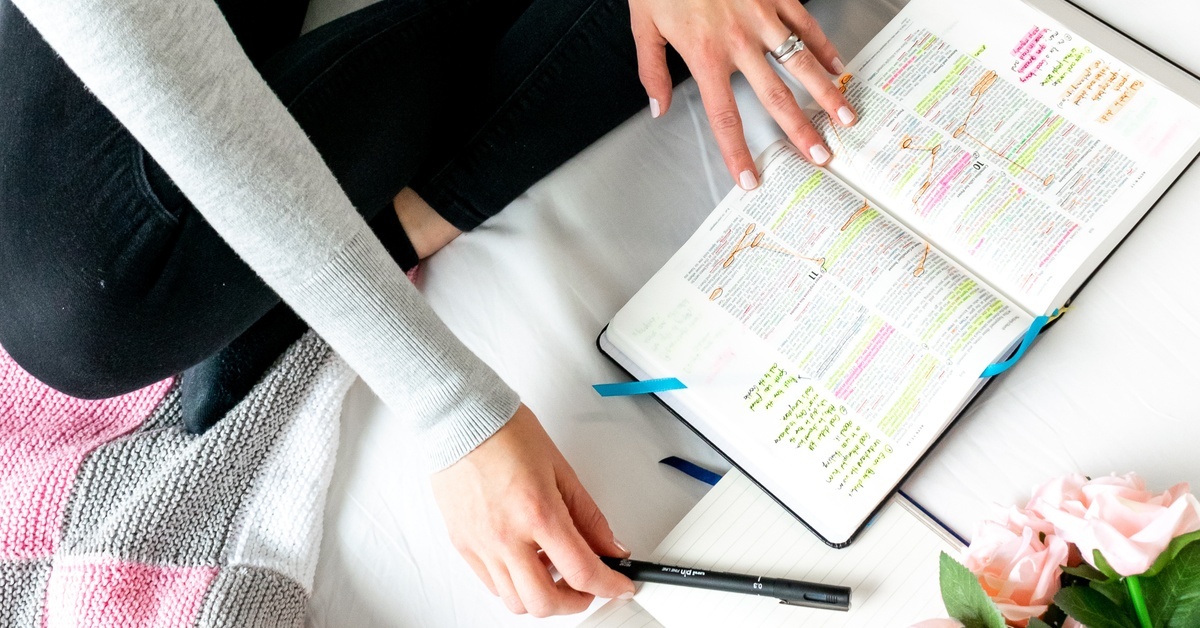Things To Consider When Choosing a Journaling Bible
 A journaling Bible provides space for writing personal reflections, prayers, and creative expressions. Journaling fosters a deeper understanding of scripture, and writing directly in your Bible keeps your reflections organized and connected to the relevant Bible verses. Learn the key things to consider when choosing a journaling Bible so you can find the right edition for your time in the Word.
A journaling Bible provides space for writing personal reflections, prayers, and creative expressions. Journaling fosters a deeper understanding of scripture, and writing directly in your Bible keeps your reflections organized and connected to the relevant Bible verses. Learn the key things to consider when choosing a journaling Bible so you can find the right edition for your time in the Word.
Paper Quality
Bibles typically have thin pages to make the book easier to handle, but these pages are also fragile when it comes to note-taking. You journaling Bible should have paper that's thick enough to prevent ink from bleeding through to the other side. The paper should also have a smooth texture that allows pens and pencils to glide easily across the surface.
Tip: Use Pens and Highlighters for Bibles
Bibles with thicker pages are great for note-taking because they’re more resistant to bleed-through and tears. Still, using pens and highlighters made specifically for Bibles will protect the pages and make your notes look their best. Whether you’re annotating, underlining, highlighting, or illustrating, these writing tools resist fading and won’t bleed or smear.
Margin Space
You’ll need plenty of space for writing, so consider the margin size when choosing your journaling Bible. Wide-margin KJV Bibles typically have margins of at least an inch, giving you plenty of room to write notes, draw illustrations, or record prayers. While all wide-margin Bibles are designed for note-taking, some editions provide more space than others, so compare your options. If you want to take copious notes and keep them as close to the Bible verse as possible, you may find a Bible with a 2.5-inch margin better for your purposes.
The placement of journaling space varies between different Bible editions. Some designs feature wide outer margins on every page, while others include dedicated journaling pages interspersed throughout the text. Single-column text layouts typically provide more margin space than traditional two-column formats.
Binding and Durability
A durable binding ensures your journaling Bible withstands frequent handling and the stress of lying flat while you write. Quality bindings use strong adhesive or stitching to keep pages securely attached to the spine. The cover should be sturdy enough to provide a stable writing surface when the Bible is open. Reinforced spine construction prevents cracking and page separation over time.
Several binding types offer excellent durability for regular journaling use:
- Edge-lined binding attaches the cover to the endpapers, offering a strong, durable design and added flexibility for easier handling.
- Smyth-sewn binding features sewn sections of pages for enhanced durability and flexibility, allowing the Bible to lay flat when open.
- Overcast stitch binding reinforces the spine with visible stitching, providing exceptional strength and ensuring pages stay secure even with frequent flipping.
A Bible with quality paper, generous margin space, and durable binding will serve you well for years of spiritual growth and reflection. Consider how often you plan to write in your Bible and what types of notes or artwork you want to create. The right journaling Bible for you can be a powerful tool for engaging with scripture and expressing your faith.
